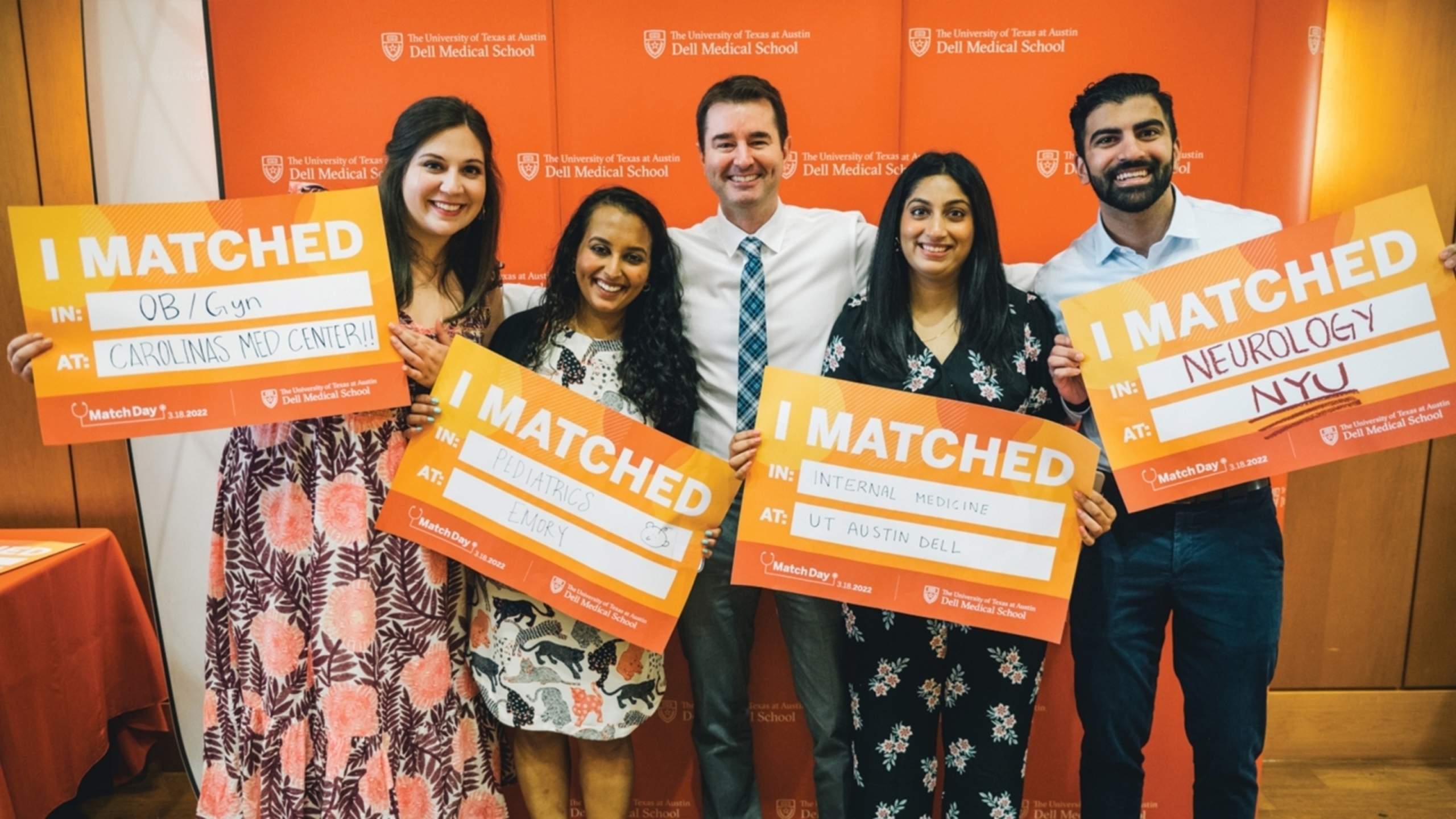Graduating Dell Med students matched to residencies across 18 states; nearly half will stay in Texas, with 1 in 4 remaining in Austin.
Physicians from across the country will come to Austin to continue their medical training following today’s “match,” an annual rite of passage for graduating medical students and doctors pursuing highly specialized training. A record 169 incoming residents and fellows matched to Dell Medical School at The University of Texas at Austin this year.
In all, Dell Med will be home to 400 physicians-in-training starting this summer — up by 83% since 2012. Last year, residents and fellows provided more than 700,000 hours of care at 75-plus clinics and hospitals across Central Texas.
Most matches were revealed this morning, when graduating medical students across the country opened envelopes revealing where they would spend the next stage of their medical careers.

The number of graduate medical education programs at Dell Med has nearly doubled in the last year, with 21 new training programs added in 2021. “It’s extraordinary to have attracted residents and fellows to nearly all the available positions in our programs, and we’re excited to welcome these new doctors to Central Texas,” said Jonathan MacClements, M.D., associate dean of graduate medical education.
Where Dell Med’s Grads Are Headed
Match Day brought equally good news to the students graduating with medical degrees from Dell Med. All who plan to pursue residency matched, combining with the graduate medical education program placements to result in a near-perfect match for the school.
Hours before the reveal, North Carolina native Helen Schafer was contemplative, calling Dell Med “a special place.”
“I will never forget watching Dell Med get built, thinking about how I wanted to go to medical school and that this was the place that would help me accomplish my dreams,” she said. Schafer earned both M.D. and Master of Public Health degrees during her four years as a student.
Among the 46 Dell Med students who entered the match, 47% will stay in Texas for residency. A quarter of graduates will remain in Austin, where they will continue to learn from Dell Med faculty as part of residency programs jointly led with the school’s academic medical partner, Ascension Seton.
“The students who will stay in Austin to practice as resident physicians — along with the new residents and fellows from out-of-state schools who we’re attracting — are a direct result of the investment the community made when it voted to create Dell Med in 2012,” said C. Martin Harris, M.D., MBA, interim vice president for medical affairs at UT.
“Even as residents, these physicians’ contributions are critical to health care systems,” said President and CEO of Ascension Texas Andy Davis, citing their importance to Ascension’s mission to transform health care delivery and praising the relationship with Dell Med. “Through our collaboration, we are stronger in care delivery and at the forefront of the latest research, diagnostic and technological developments.”
Helping Fill a Growing Gap in Primary Care
Many of Dell Med’s graduating students will help address a shortage of primary care physicians in the U.S., which the Association of American Medical Colleges predicts will grow to between 17,800 and 48,000 doctors by 2034. Nearly half (22) of Dell Med’s fourth-year students will enter primary care fields, including internal medicine, pediatrics, family medicine, and obstetrics and gynecology.
But the school’s aim isn’t to produce more of the same. “Our educational model is designed to train leaders as comfortable taking on systemic challenges in health as they are caring for individual patients,” said George Macones, M.D., interim dean. “Graduates of our M.D., residency and fellowship programs will be a new kind of doctor.”
How Match Works
The National Resident Matching Program connects more than 44,000 applicants to 37,000 training positions every year.
It uses a mathematical algorithm to consider the preferences of applicants and program directors and assign medical school graduates to training positions available at U.S. teaching hospitals. Not everyone matches, but for those who do, results are binding.